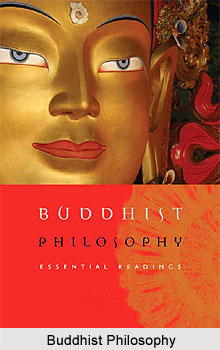 Pudgala vada was a group of five of the early Schools of Buddhism. The Pudgalavadins asserted that there is no atman, there is a person which is neither the same nor different from the Skandhas. The person was the method of accounting for Karma, rebirth and Nirvana. Among the prominent of the Pudgalavadin schools were the Sammitiya. The Sammitiya were the most populous non-Mahayanist sect in India.
Pudgala vada was a group of five of the early Schools of Buddhism. The Pudgalavadins asserted that there is no atman, there is a person which is neither the same nor different from the Skandhas. The person was the method of accounting for Karma, rebirth and Nirvana. Among the prominent of the Pudgalavadin schools were the Sammitiya. The Sammitiya were the most populous non-Mahayanist sect in India.
The Pudgalavadins described the person as "inexpressible," in its relation to the five aggregates. The self and the aggregates are neither same nor different. The Pudgalavadins considered self as true and ultimate. This self dies and is reborn through successive lives in Samsara and exists till enlightenment is attained. The Pudgalavadins regarded Nirvana as a real entity that differed from realm of dependent origination and that is indestructible. The Pudgalavadins distinguished between two kinds of doctrine, concerning phenomena and concerning persons. However they did not regard these as related to higher and lower kinds of truth predicates. They recognized three truth predicates: "ultimate truth", "characteristical truth," and "practical truth."
There was an entity called a person that emerged from the interactions of the five constituents with which it was neither distinct nor identical. The view of the Pudgalavadins is paradoxical and seems to have been regarded by their opponents as irrational. Although, Pudgalavadins evidently felt that only such a view did justice to the actual experience of personal existence and to karma, rebirth and final liberation. The very considerable success of the Pudgalavadins in India indicates that there were many who regarded their doctrine as a practical interpretation of the Buddha`s teachings. The Pudgalavadins held that the self once realized to be indeterminate could not be a basis for the self-love and craving which are the sources of suffering.
Pudgalavadins were interested in the nature of selfhood to the extent that it had a bearing on the problem of suffering. It could neither be classified as an ultimate reality nor as a fictional invention. This view was not accepted by most Buddhists. The Pudgala vada was one of the dominant traditions of Buddhism in India during the time Buddhism had survived there. It was an interpretation which had significant strengths as well as weaknesses.



















